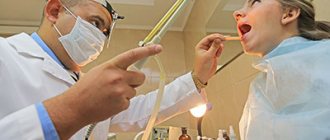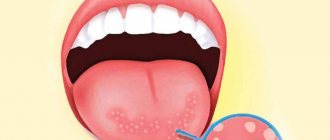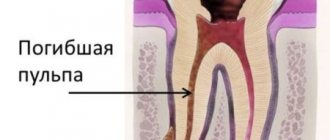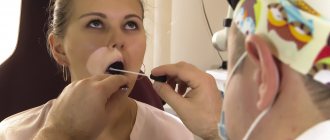Causes of redness in the throat
In most cases, redness of the mucous membrane of the throat is combined with pain when swallowing and occurs as a result of the development of tonsillopharyngitis1. Isolated damage to the pharynx (pharyngitis) and pharyngeal tonsils (tonsillitis) is rare, and there is nothing surprising about this: the pharynx and tonsils are located close to each other1,2,4.
Most often, inflammation of the pharynx is accompanied by acute respiratory infections (ARI). In preschool children, in 89% of cases, ARI is caused by viruses 1. The mucous membrane of the pharynx and tonsils is a favorite place for rhinoviruses and adenoviruses, as well as parainfluenza viruses. Less commonly, its inflammation is caused by the Epstein-Barr virus, enterovirus (Coxsackie virus), and herpes simplex virus1,2,5.
The viral nature of tonsillopharyngitis predominates in children aged 1 to 5 years3. Starting from the age of five, children more often suffer from bacterial forms of the disease. Moreover, in 20-30%1,2,4,5,7 (according to some data, in 75%3) of young patients, doctors find a dangerous bacterium in the throat and tonsils - beta-hemolytic streptococcus of group A2,3,4,5,6 .
Other microbes can also cause redness in the throat: mycoplasma, chlamydia, staphylococcus and Candida fungi2,3. Sometimes tonsillopharyngitis becomes one of the manifestations of a general disease2,3: diphtheria, scarlet fever, infectious mononucleosis, tularemia, typhoid fever or even HIV3. Treatment will be different in each case.
Causes of red throat
Redness of the throat may be due to factors unrelated to infection2:
- Mechanical injuries to the mucous membrane of the pharynx due to solid food and bones.
- Eating hot food that can cause thermal burn2.
- Irritation or burn of the pharynx with chemicals (acids, alkalis, alcohol-containing liquids)2.
- Eating excessively spicy foods (hot pepper, ginger, horseradish, mustard can cause irritation of the mucous membranes).
- Inhalation of tobacco smoke, dust or air contaminated with mechanical and chemical impurities.
Eating food containing red food dyes. In this case, the throat is red, but does not hurt.
Up to contents
Symptoms to watch out for
The development of tonsillopharyngitis in a child is difficult to miss. Children are extremely sensitive to sore throats1,5,6. With its appearance, babies' sleep and appetite are disrupted, they become capricious and whiny1,6. Older children complain of a sore throat and sore throat when swallowing6,7. They develop a dry, superficial cough1,7.
A runny nose, red throat and fever in a child, especially in the autumn-winter period and early spring, most often indicate a cold, that is, ARVI1. The mucous membrane of the pharynx looks reddened, swollen, loose, dry or moist, covered with cloudy mucus1,2.
With an adenovirus infection, these symptoms include redness of the white membrane of the eyes, swelling of the eyelids, lacrimation, and “films” typical of adenoviral conjunctivitis appear in the eyes. 1.2. Lymph nodes enlarge. Sometimes nausea, vomiting and abdominal pain occur1. Upon examination, the pharyngeal mucosa appears slightly reddened, loose, with whitish deposits and lumps of thick mucus1,2.
The development of tonsillopharyngitis may be associated with enterovirus infection caused by Coxsackie viruses1,2. Enteroviral vesicular pharyngitis is called herpetic sore throat, since the rash resembles the blisters of herpes 2. Blisters filled with cloudy liquid appear on the reddened mucous membrane of the pharynx and oral cavity, and even on the plantar surface of the feet and palms. Possible muscle and abdominal pain1.
Fever, red throat and cough in a child may be manifestations of infectious mononucleosis associated with Epstein-Barr viruses1,2. In this case, in addition to redness and swelling of the mucous membrane of the pharynx, purulent “films” on the tonsils, all lymph nodes, liver and spleen are also enlarged1,2.
Tonsillopharyngitis caused by beta-hemolytic streptococcus is considered the most dangerous form of the disease2,3. This is due to the large number of complications that infection2 can lead to if it is not treated or treated incorrectly.
Streptococcal tonsillopharyngitis sometimes leads to the development of peritonsillar abscess, rheumatic fever, glomerulonephritis, and bacterial endocarditis2.
The following symptoms will help you suspect that redness in the throat is the result of the activity of streptococci:
- high temperature (> 380 C);
- absence of runny nose and cough;
- severe sore throat, forcing you to refuse food;
- severe swelling of the tonsils;
- the appearance of pinpoint hemorrhages (petechial rash) on the mucous membrane of the tonsils, soft palate and pharyngeal walls;
- purulent plaque on the tonsils, tightly connected to the underlying tissues;
- the appearance of ulcers and erosions on the tonsils in places where plaque is rejected;
- enlarged cervical lymph nodes2,3,7.
If a child has a red throat, but no temperature, this is a reason to think about non-infectious causes. Redness of the pharyngeal mucosa in a baby can be caused by prolonged crying, staying in a smoky room, eating too cold or hot food, or trauma to the pharynx with sharp objects. Sometimes the mucous membrane is colored red by dyes found in foods. The doctor takes all this into account when diagnosing tonsillopharyngitis1,2.3.
Otolaryngologist M.G. Goncharova
Red throat ” – with these complaints, parents often turn not only to an otolaryngologist, but also to a pediatrician. What is a red throat, and in what cases does it happen? In any case, a red throat implies inflammatory changes in the mucous membrane in the pharynx. What diseases does this happen with? The most common disease that causes hyperemia of the pharyngeal mucosa is acute catarrhal pharyngitis. At the same time, we see hyperemia of the mucous membrane of the posterior wall of the pharynx, the side walls of the pharynx, and the soft palate. This condition occurs very often with respiratory viral infections, influenza, and childhood infections such as chicken pox, measles, and rubella. Redness of the back wall of the pharynx can also be caused by exacerbations of diseases of the gastrointestinal tract, such as biliary dyskinesia, chronic gastroduodenitis.
Sore throat in children
But such a simple disease as acute pharyngitis should not be confused with a more serious disease such as tonsillitis, because sore throat is usually called sore throat. Unlike acute pharyngitis, with angina, in addition to hyperemia of the posterior pharyngeal wall, we note hyperemia, filtration, edema of the anterior and posterior palatine arches. The palatine tonsils, which are located on the lateral surfaces of the pharynx, in this case increase in size, swell, and turn red.
At different stages of tonsillitis, either a whitish coating may appear on the surface of the tonsils, or purulent compartments may appear in the lacunae. Sore throat, unlike acute pharyngitis, is a serious infectious disease that most often occurs with fever and symptoms of intoxication.
What other diseases cause the “red throat” symptom?
In addition, a red throat can occur with various inflammatory diseases of the oral mucosa, such as stomatitis, or during teething in children. In this case, as with acute pharyngitis, the anterior and posterior palatine arches are not involved in the process and the tonsils are not involved.
The throat may be red even in the absence of any acute changes in the pharynx. Redness of the palatine arches or the so-called “congestive hyperemia of the palatine arches” may be a sign of a chronic inflammatory process or a sign of chronic tonsillitis. In this case, we see congestive hyperemia of the anterior and posterior palatine arches, hypertrophy of the lateral ridges of the pharynx without any acute disease. Depending on the symptoms, this condition may not require treatment at the time of examination.
What symptoms are noticeable to parents when their child’s throat is red?
Now let's talk about how the child behaves, and what parents can observe if the throat is red. If parents look into the child’s throat and see that the back wall of the pharynx is hyperemic, in this case it is very important to take into account the general condition of the child.
If the child’s condition is good, there are no symptoms of intoxication, there is no increase in temperature, he does not actively complain of a sore throat, then this non-serious condition can be regarded either as symptoms of acute pharyngitis, which require symptomatic therapy, or require treatment of an underlying disease, such as respiratory viral infection or any of the childhood infections.
In the case when a child actively complains of a sore throat, while he has an increase in temperature, symptoms of general intoxication, this condition must be differentiated from a sore throat, and in this case the child must consult a doctor and carry out active treatment, including (if necessary) general antibacterial therapy.
Treatment issues. What to give and when to give for a red throat.
As for the treatment and approach of parents to the problem of a red throat, it is very important to pay attention to the following points: a red throat is a symptom, I repeat, of a number of diseases, and in some cases, treating only the red throat itself will not lead to the desired result.
Therefore, active independent local therapy using antiseptics, local antibacterial drugs, sometimes even saline solutions, can lead to the development of pharyngeal dysbiosis.
Dysbiosis of the pharynx is a disruption of the normal microflora in the oral cavity, which, in turn, leads to a decrease in the protective functions of the mucous membrane itself in the oral cavity, and in this case it itself becomes an entry point for infection.
On the other hand, during self-medication, the adaptation of pathological microorganisms to antiseptics or local antibacterial drugs quickly develops, which in the future can significantly complicate the treatment of acute inflammatory diseases in the pharynx when necessary.
Therefore, before using any drug to rinse or irrigate the pharynx, you need to very clearly define the purpose of this treatment, because such a concept as “treating just a red throat” is unacceptable.
In some cases, a red throat may not be treated and does not require any special treatment, and the problem will be solved only by treating the underlying disease that led to the symptom of a red throat.
What inconveniences does the problem of red throat cause for parents?
Why is this problem inconvenient for parents? First of all, parents are worried about the fact that the child has a red throat.
Remember, it is very important to always take into account, in addition to the fact that we see a red throat, also general clinical symptoms: are there any other symptoms of disease, how disturbed is the child’s general condition, is there an increase in temperature? And only in this case it is necessary to somehow deal with this problem.
On the other hand, a red throat may be a symptom of some chronic disease in the pharynx, the most common of which are chronic tonsillitis or chronic pharyngitis, which can exist as independent diseases or, in the case of chronic pharyngitis, as a symptom of some disease in the underlying parts of either the gastrointestinal tract or lower respiratory tract. Therefore, if you often observe a red throat in your child, then in this case you need to consult a pediatrician, or better yet, an otolaryngologist, because it is with him that you can clearly determine what this pathology is associated with. An otolaryngologist will be able to teach you to differentiate a mild disease such as acute pharyngitis, which is a symptom of a respiratory infection, from a more severe condition, and also to rule out a chronic disease in the tonsils of the back of the pharynx.
A visit to an otolaryngologist is the ideal solution
I repeat once again, what would be the most logical solution if you often observe a red throat in your child? This problem should be discussed with an otolaryngologist, who will analyze the diseases that the child suffered from, analyze the objective picture, and, if necessary, can examine the microflora in the oral cavity, on the back wall of the pharynx, in the lagoons of the tonsils. And only then will it be possible to come to some correct conclusion, on the basis of which treatment will be selected or the dynamics of observations will be selected, i.e. a certain concept will be formulated according to which this child will be observed or treated.
Is the red throat effect related to respiratory function?
How can a red throat and respiratory dysfunction be connected? In general, these are two rather related problems, if only because when a child’s breathing function is impaired, the child switches to mouth breathing. Breathing through the mouth is not physiological: the child breathes through the mouth, while the inhaled air is insufficiently warmed and moistened, and in any case this will lead to certain changes, and then inflammatory changes in the mucous membrane, primarily the back wall of the pharynx. This will manifest itself in the form of hyperemia or redness of the mucous membrane of the back wall of the pharynx.
If we talk about how quickly this problem can be dealt with, then it is impossible to answer this question unequivocally; a lot here depends on the reason why the red throat appeared. Therefore, it is quite difficult to give any recommendations here; it all depends on the condition that led to the redness of the throat.
What to do if a child has a red throat?
A red throat as a symptom is very rarely isolated. It is accompanied by other signs that add up to one or another clinical picture. Only a doctor can correctly assess it and select adequate treatment. Therefore, if your child’s throat is red, you should definitely visit the children’s clinic.
Which doctor should I contact? Of course, to the pediatrician. If necessary, he will refer you to the right specialist, an infectious disease specialist or an ENT doctor.
Treatment of tonsillopharyngitis, which is prescribed by doctors, usually includes general and local therapy. If the disease is caused by bacterial microflora, antibiotics are used1,2,7. For viral infections there is no point in using them: viruses are not sensitive to these drugs2,4,5,7.
Antipyretic drugs based on paracetamol and ibuprofen2,4 approved for children are used as needed, mainly when the temperature rises above 380 C and/or poor heat tolerance1,3.
In local therapy, drugs based on antiseptics1,3,4 are widely used - substances with antimicrobial effects. Preference is given to those forms that are easy to use and have a pleasant taste, which is especially important for children1,5,6.
For local treatment of inflammatory diseases of the pharynx in children over 3 years of age, depending on age, HEXORAL®2,3,4,5,6 preparations can be used. Aerosols and lozenges are especially convenient6,7.
HEXORAL® aerosol with mint flavor is approved for use in the treatment of children over 3 years of age8. It is based on the antiseptic hexetidine, which has a wide spectrum of antimicrobial action, is active against some viruses, and can have a mild analgesic effect8. A convenient bottle with a nozzle allows you to spray the drug evenly over the entire surface of the pharynx.
If a child is over 3 years old and already knows how to gargle, HEXORAL®11 solution can be used for the rinsing procedure. In addition, the solution is suitable for treating the throat with a tampon.
HEXORAL® tablet forms are distinguished by a variety of tastes.
“Mint” HEXORAL® TABS based on the antiseptic chlorhexidine and the local anesthetic benzocaine can complement the traditional therapy of tonsillopharyngitis in children 4 years of age and older9.
HEXORAL® CLASSIC with the flavors of orange, lemon, black currant, lemon and honey with lemon is suitable for children over 6 years old10.
Adolescents over 12 years of age are allowed to use HEXORAL® EXTRA tablets, which, in addition to the antiseptic component, contain the anesthetic lidocaine, which can relieve even severe sore throat12.
If your child is sick, you should consult a pediatrician in any case. Only he is able to determine how to treat the baby, because a red throat can be a symptom of a serious disease.
The information in this article is for reference only and does not replace professional advice from a doctor. To make a diagnosis and prescribe treatment, consult a qualified specialist.
to come back to the beginning
Literature
- I. N. Zakharova, E. B. Machneva. Pediatrician tactics for acute tonsillopharyngitis in children. Medical Council No. 1, 2021 pp. 128-132.
- Zaitseva S.V., Zastrozhina A.K., Kulikova E.V. Acute tonsillitis in the practice of a pediatrician. Medical advice. 2019; 2: 113-119.
- G. A. Samsygina. Acute tonsillopharyngitis in children. Pediatrics2008/Vol. 87/No. 3 pp. 91-95.
- S.A. Karpishchenko, S.I. Alekseenko, S.V. Baranskaya. Treatment of tonsillopharyngitis in children // Medical Council, No. 1, 2021, pp. 70–75.
- Karpishchenko S.A., Lavrenova G.V., Alekseenko S.I., Muratova E.I. Issues of choosing drug therapy for sore throat in children. Pediatrics (Appendix to the journal Consilium Medicum). 2018; 1:39–42. DOI: 10.26442/2413-8460_2018.1.39-42.
- HELL. Vetrova. Acute tonsillitis in children: a pediatrician’s point of view // Pediatric pharmacology. 2014; 11 (2): 61–64.
- Piskunov V.S., Nikitin N.A. Symptomatic treatment of tonsillopharyngitis in acute respiratory viral infection in frequently ill children. Pediatrics. Consilium Medicum. 2019; 1:44–51. DOI: 10.26442/26586630.2019.1.190192.
- Instructions for use of the drug HEXORAL® aerosol: .
- Instructions for use of the drug HEXORAL®TABS: .
- Instructions for use of the drug HEXORAL®CLASSIC: .
- Instructions for use of the drug HEXORAL® SOLUTION: .
- Instructions for use of the drug HEXORAL® TABS EXTRA: .







